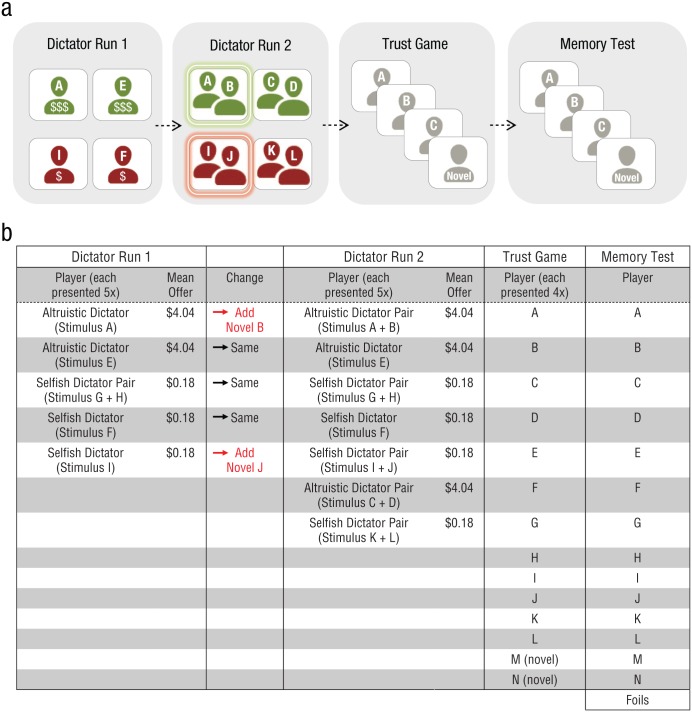Fig. 1.
Task structure of Experiment 1. As illustrated with examples in (a), all subjects played two runs of dictator games before reencountering the same dictators in a trust game. In Dictator Run 1, subjects received various altruistic splits from good dictators (i.e., stimuli A and E) and selfish splits from bad dictators (e.g., stimuli I and F). After each split, subjects rated how they felt. In Dictator Run 2, subjects again received altruistic and selfish splits from dictators, only this time some of the dictators who had made decisions by themselves in Run 1 made decisions together with partners. For example, dictator I, who made selfish splits by himself in Run 1, made selfish splits collectively with dictator J in Run 2. Subjects then played a trust game, in which they decided how much of $10 to entrust in a series of individuals: the dictators from Runs 1 and 2, as well as novel, never-before-seen people who had no history with the subjects. Finally, subjects completed a surprise memory test, in which they were asked to report how much money each dictator had offered them in the dictator games. Panel (b) lists all stimuli presented in each of the four phases of the experiment.

